10th DEC 1913 RABINDRANATH TAGORE (7 MAY 1861-7 AUG 1941)
Rabindranath Tagore
From Wikipedia, the free encyclopedia
"Tagore" redirects here. For other uses, see Tagore (disambiguation).
| Rabindranath Tagore রবীন্দ্রনাথ ঠাকুর | |
|---|---|

Tagore (c.1915)
| |
| Native name | রবীন্দ্রনাথ ঠাকুর |
| Born | Rabindranath Thakur 7 May 1861 Calcutta, Bengal Presidency,British India |
| Died | 7 August 1941 (aged 80) Calcutta |
| Occupation | Writer, painter |
| Language | Bengali, English |
| Ethnicity | Bengali |
| Literary movement | Contextual Modernism |
| Notable works | Gitanjali, Gora, Ghare-Baire,Jana Gana Mana, Rabindra Sangeet, Amar Shonar Bangla(other works) |
| Notable awards | Nobel Prize in Literature 1913 |
| Spouse | Mrinalini Devi (m. 1883–1902) |
| Children | five children, two of whom died in childhood |
| Relatives | Tagore family |
| Signature | |
Rabindranath Tagore[a] ( i/rəˈbindrəˈnɑːt ˈtɑːɡɔr/; Bengali pronunciation: [robind̪ro nat̪ʰ ʈʰakur]), also written Ravīndranātha Thākura[1] (7 May 1861 – 7 August 1941),[b] sobriquet Gurudev,[c] was a Bengali polymath who reshaped Bengali literature and music, as well as Indian art with Contextual Modernism in the late 19th and early 20th centuries. Author of Gitanjali and its "profoundly sensitive, fresh and beautiful verse",[3] he became the first non-European to win the Nobel Prize in Literature in 1913.[4] In translation his poetry was viewed as spiritual and mercurial; however, his "elegant prose and magical poetry" remain largely unknown outside Bengal.[5] Tagore introduced new prose and verse forms and the use of colloquial language into Bengali literature, thereby freeing it from traditional models based on classical Sanskrit. He was highly influential in introducing the best of Indian culture to the West and vice versa, and he is generally regarded as the outstanding creative artist of the modern Indian subcontinent.
i/rəˈbindrəˈnɑːt ˈtɑːɡɔr/; Bengali pronunciation: [robind̪ro nat̪ʰ ʈʰakur]), also written Ravīndranātha Thākura[1] (7 May 1861 – 7 August 1941),[b] sobriquet Gurudev,[c] was a Bengali polymath who reshaped Bengali literature and music, as well as Indian art with Contextual Modernism in the late 19th and early 20th centuries. Author of Gitanjali and its "profoundly sensitive, fresh and beautiful verse",[3] he became the first non-European to win the Nobel Prize in Literature in 1913.[4] In translation his poetry was viewed as spiritual and mercurial; however, his "elegant prose and magical poetry" remain largely unknown outside Bengal.[5] Tagore introduced new prose and verse forms and the use of colloquial language into Bengali literature, thereby freeing it from traditional models based on classical Sanskrit. He was highly influential in introducing the best of Indian culture to the West and vice versa, and he is generally regarded as the outstanding creative artist of the modern Indian subcontinent.
A Pirali Brahmin from Calcutta with ancestral gentry roots in Jessore, Tagore wrote poetry as an eight-year-old.[6] At age sixteen, he released his first substantial poems under the pseudonym Bhānusiṃha ("Sun Lion"), which were seized upon by literary authorities as long-lost classics.[7][8] By 1877 he graduated to his first short stories and dramas, published under his real name. As a humanist, universalist internationalist, and strident nationalist he denounced the British Raj and advocated independence from Britain. As an exponent of the Bengal Renaissance, he advanced a vast canon that comprised paintings, sketches and doodles, hundreds of texts, and some two thousand songs; his legacy endures also in the institution he founded, Visva-Bharati University.[9][10][11][12][13]
Tagore modernised Bengali art by spurning rigid classical forms and resisting linguistic strictures. His novels, stories, songs, dance-dramas, and essays spoke to topics political and personal. Gitanjali (Song Offerings),Gora (Fair-Faced) and Ghare-Baire (The Home and the World) are his best-known works, and his verse, short stories, and novels were acclaimed—or panned—for their lyricism, colloquialism, naturalism, and unnatural contemplation. His compositions were chosen by two nations as national anthems: India's Jana Gana Mana and Bangladesh's Amar Shonar Bangla. Some sources state that Sri Lanka's National Anthem was written by Tagore whilst others state it was inspired by the work of Tagore.[14][15][16][17][18]
Contents
[hide]- 1Early life: 1861–1878
- 2Shelaidaha: 1878–1901
- 3Santiniketan: 1901–1932
- 4Twilight years: 1932–1941
- 5Travels
- 6Works
- 7Politics
- 8Santiniketan and Visva-Bharati
- 9Impact and legacy
- 10List of works
- 11Adaptations of novels and short stories in cinema
- 12See also
- 13References
- 14Bibliography
- 15Further reading
- 16External links
Early life: 1861–1878
Main article: Early life of Rabindranath Tagore
The youngest of thirteen surviving children, Tagore (nicknamed "Rabi") was born in the Jorasanko mansion in Calcutta to parents Debendranath Tagore (1817–1905) and Sarada Devi (1830–1875).[d]
The last two days a storm has been raging, similar to the description in my song—Jhauro jhauro borishe baridhara [... amidst it] a hapless, homeless man drenched from top to toe standing on the roof of his steamer [...] the last two days I have been singing this song over and over [...] as a result the pelting sound of the intense rain, the wail of the wind, the sound of the heaving Gorai [R]iver, have assumed a fresh life and found a new language and I have felt like a major actor in this new musical drama unfolding before me.
“
”
— Letter to Indira Devi.[24]
Tagore was raised mostly by servants; his mother had died in his early childhood and his father travelled widely.[25] Tagore family was at the forefront of the Bengal renaissance. They hosted the publication of literary magazines; theatre and recitals of Bengali and Western classical music featured there regularly. Tagore's oldest brother Dwijendranath was a philosopher and poet. Another brother, Satyendranath, was the first Indian appointed to the elite and formerly all-European Indian Civil Service. Yet another brother, Jyotirindranath, was a musician, composer, and playwright.[26] His sister Swarnakumari became a novelist.[citation needed] Jyotirindranath's wife Kadambari, slightly older than Tagore, was a dear friend and powerful influence. Her abrupt suicide in 1884, soon after he married, left him for years profoundly distraught.[citation needed]
Tagore largely avoided classroom schooling and preferred to roam the manor or nearby Bolpur and Panihati, idylls which the family visited.[27][28] His brother Hemendranath tutored and physically conditioned him—by having him swim the Ganges or trek through hills, by gymnastics, and by practising judo and wrestling. He learned to draw, anatomy, geography and history, literature, mathematics, Sanskrit, and English—his least favourite subject.[29] Tagore loathed formal education—his scholarly travails at the local Presidency College spanned a single day. Years later he held that proper teaching does not explain things; proper teaching stokes curiosity:[30]
After his upanayan (coming-of-age) rite at age eleven, Tagore and his father left Calcutta in February 1873 to tour India for several months, visiting his father's Santiniketanestate and Amritsar before reaching the Himalayan hill station of Dalhousie. There, Tagore read biographies, studied history, astronomy, modern science, and Sanskrit, and examined the classical poetry of Kālidāsa.[31][32]
Tagore returned to Jorosanko and completed a set of major works by 1877, one of them a long poem in the Maithili style of Vidyapati. As a joke, he claimed that these were the lost works of (what he claimed was) a newly discovered 17th century Vaiṣṇava poet Bhānusiṃha.[33] Regional experts accepted them as the lost works of Bhānusiṃha.[e][34] He debuted in the short-story genre in Bengali with "Bhikharini" ("The Beggar Woman").[35][36] Published in the same year, Sandhya Sangit (1882) includes the poem "Nirjharer Swapnabhanga" ("The Rousing of the Waterfall").
Shelaidaha: 1878–1901
Because Debendranath wanted his son to become a barrister, Tagore enrolled at a public school in Brighton, East Sussex, England in 1878.[24] He stayed for several months at a house that the Tagore family owned near Brighton andHove, in Medina Villas; in 1877 his nephew and niece—Suren and Indira Devi, the children of Tagore's brother Satyendranath—were sent together with their mother, Tagore's sister-in-law, to live with him.[37] He briefly read law atUniversity College London, but again left school. He opted instead for independent study of Shakespeare, Religio Medici, Coriolanus, and Antony and Cleopatra. Lively English, Irish, and Scottish folk tunes impressed Tagore, whose own tradition of Nidhubabu-authored kirtans and tappas and Brahmo hymnody was subdued.[24][38] In 1880 he returned to Bengal degree-less, resolving to reconcile European novelty with Brahmo traditions, taking the best from each.[39] In 1883 he married Mrinalini Devi, born Bhabatarini, 1873–1902; they had five children, two of whom died in childhood.[40]
In 1890 Tagore began managing his vast ancestral estates in Shelaidaha (today a region of Bangladesh); he was joined by his wife and children in 1898. Tagore released his Manasi poems (1890), among his best-known work.[41] AsZamindar Babu, Tagore criss-crossed the riverine holdings in command of the Padma, the luxurious family barge. He collected mostly token rents and blessed villagers who in turn honoured him with banquets—occasionally of dried rice and sour milk.[42] He met Gagan Harkara, through whom he became familiar with Baul Lalon Shah, whose folk songs greatly influenced Tagore.[43] Tagore worked to popularise Lalon's songs. The period 1891–1895, Tagore'sSadhana period, named after one of Tagore's magazines, was his most productive;[25] in these years he wrote more than half the stories of the three-volume, 84-story Galpaguchchha.[35] Its ironic and grave tales examined the voluptuous poverty of an idealised rural Bengal.[44]
Santiniketan: 1901–1932
Main article: Middle years of Rabindranath Tagore
In 1901 Tagore moved to Santiniketan to found an ashram with a marble-floored prayer hall—The Mandir—an experimental school, groves of trees, gardens, a library.[45] There his wife and two of his children died. His father died in 1905. He received monthly payments as part of his inheritance and income from the Maharaja of Tripura, sales of his family's jewellery, his seaside bungalow in Puri, and a derisory 2,000 rupees in book royalties.[46] He gained Bengali and foreign readers alike; he published Naivedya (1901) and Kheya (1906) and translated poems into free verse.
In November 1913, Tagore learned he had won that year's Nobel Prize in Literature: the Swedish Academy appreciated the idealistic—and for Westerners—accessible nature of a small body of his translated material focussed on the 1912 Gitanjali: Song Offerings.[47] In 1915, the British Crown granted Tagore a knighthood.[citation needed] He renounced it after the 1919 Jallianwala Bagh massacre.[48]
In 1921, Tagore and agricultural economist Leonard Elmhirst set up the "Institute for Rural Reconstruction", later renamed Shriniketan or "Abode of Welfare", in Surul, a village near the ashram. With it, Tagore sought to moderateGandhi's Swaraj protests, which he occasionally blamed for British India's perceived mental — and thus ultimately colonial — decline.[49] He sought aid from donors, officials, and scholars worldwide to "free village[s] from the shackles of helplessness and ignorance" by "vitalis[ing] knowledge".[50][51] In the early 1930s he targeted ambient "abnormal caste consciousness" and untouchability. He lectured against these, he penned Dalit heroes for his poems and his dramas, and he campaigned—successfully—to open Guruvayoor Temple to Dalits.[52][53]
Twilight years: 1932–1941
Dutta and Robinson describe this phase of Tagore's life as being one of a "peripatetic litterateur". It affirmed his opinion that human divisions were shallow. During a May 1932 visit to a Bedouin encampment in the Iraqi desert, the tribal chief told him that "Our prophet has said that a true Muslim is he by whose words and deeds not the least of his brother-men may ever come to any harm ..." Tagore confided in his diary: "I was startled into recognizing in his words the voice of essential humanity."[54] To the end Tagore scrutinised orthodoxy—and in 1934, he struck. That year, an earthquake hit Bihar and killed thousands. Gandhi hailed it as seismic karma, as divine retribution avenging the oppression of Dalits. Tagore rebuked him for his seemingly ignominious inferences.[55] He mourned the perennial poverty of Calcutta and the socioeconomic decline of Bengal. He detailed these newly plebeian aesthetics in an unrhymed hundred-line poem whose technique of searing double-vision foreshadowed Satyajit Ray's film Apur Sansar.[56][57] Fifteen new volumes appeared, among them prose-poem works Punashcha (1932), Shes Saptak (1935), and Patraput (1936). Experimentation continued in his prose-songs and dance-dramas: Chitra (1914), Shyama (1939), and Chandalika (1938); and in his novels: Dui Bon (1933), Malancha (1934), and Char Adhyay(1934).[citation needed]
Clouds come floating into my life, no longer to carry rain or usher storm, but to add color to my sunset sky.
“
”
—Verse 292, Stray Birds, 1916.
Tagore's remit expanded to science in his last years, as hinted in Visva-Parichay, 1937 collection of essays. His respect for scientific laws and his exploration of biology, physics, and astronomy informed his poetry, which exhibited extensive naturalism and verisimilitude.[58] He wove the process of science, the narratives of scientists, into stories in Se (1937), Tin Sangi (1940), and Galpasalpa (1941). His last five years were marked by chronic pain and two long periods of illness. These began when Tagore lost consciousness in late 1937; he remained comatose and near death for a time. This was followed in late 1940 by a similar spell. He never recovered. Poetry from these valetudinary years is among his finest.[59][60] A period of prolonged agony ended with Tagore's death on 7 August 1941, aged eighty; he was in an upstairs room of the Jorasanko mansion he was raised in.[61][62] The date is still mourned.[63] A. K. Sen, brother of the first chief election commissioner, received dictation from Tagore on 30 July 1941, a day prior to a scheduled operation: his last poem.[64]
Travels
Between 1878 and 1932, Tagore set foot in more than thirty countries on five continents.[66] In 1912, he took a sheaf of his translated works to England, where they gained attention from missionary and Gandhi protégéCharles F. Andrews, Irish poet William Butler Yeats, Ezra Pound, Robert Bridges, Ernest Rhys, Thomas Sturge Moore, and others.[67] Yeats wrote the preface to the English translation of Gitanjali; Andrews joined Tagore at Santiniketan. In November 1912 Tagore began touring the United States[68] and the United Kingdom, staying in Butterton, Staffordshire with Andrews's clergymen friends.[69] From May 1916 until April 1917, he lectured in Japan and the United States.[70] He denounced nationalism.[71] His essay "Nationalism in India" was scorned and praised; it was admired by Romain Rolland and other pacifists.[72]
Our passions and desires are unruly, but our character subdues these elements into a harmonious whole. Does something similar to this happen in the physical world? Are the elements rebellious, dynamic with individual impulse? And is there a principle in the physical world which dominates them and puts them into an orderly organization?
“
”
— Interviewed by Einstein, 14 April 1930.[73]
Shortly after returning home the 63-year-old Tagore accepted an invitation from the Peruvian government. He travelled to Mexico. Each government pledged US$100,000 to his school to commemorate the visits.[74] A week after his 6 November 1924 arrival in Buenos Aires,[75] an ill Tagore shifted to the Villa Miralrío at the behest of Victoria Ocampo. He left for home in January 1925. In May 1926 Tagore reached Naples; the next day he metMussolini in Rome.[76] Their warm rapport ended when Tagore pronounced upon Il Duce's fascist finesse.[77] He had earlier enthused: "[w]ithout any doubt he is a great personality. There is such a massive vigour in that head that it reminds one of Michael Angelo's chisel." A "fire-bath" of fascism was to have educed "the immortal soul of Italy ... clothed in quenchless light".[78]
On 14 July 1927 Tagore and two companions began a four-month tour of Southeast Asia. They visited Bali, Java, Kuala Lumpur, Malacca, Penang, Siam, and Singapore. The resultant travelogues compose Jatri (1929).[79] In early 1930 he left Bengal for a nearly year-long tour of Europe and the United States. Upon returning to Britain—and as his paintings exhibited in Paris and London—he lodged at a Birmingham Quaker settlement. He wrote his Oxford Hibbert Lectures[f] and spoke at the annual London Quaker meet.[80] There, addressing relations between the British and the Indians — a topic he would tackle repeatedly over the next two years — Tagore spoke of a "dark chasm of aloofness".[81] He visited Aga Khan III, stayed at Dartington Hall, toured Denmark, Switzerland, and Germany from June to mid-September 1930, then went on into the Soviet Union.[82] In April 1932 Tagore, intrigued by the Persian mystic Hafez, was hosted by Reza Shah Pahlavi.[83][84] In his other travels, Tagore interacted with Henri Bergson, Albert Einstein, Robert Frost, Thomas Mann, George Bernard Shaw, H.G. Wells, andRomain Rolland.[85][86] Visits to Persia and Iraq (in 1932) and Sri Lanka (in 1933) composed Tagore's final foreign tour, and his dislike of communalism and nationalism only deepened.[54] Vice-President of India M. Hamid Ansari has said that Rabindranath Tagore heralded the cultural rapprochement between communities, societies and nations much before it became the liberal norm of conduct. Tagore was a man ahead of his time. He wrote in 1932, while on a visit to Iran, that "each country of Asia will solve its own historical problems according to its strength, nature and needs, but the lamp they will each carry on their path to progress will converge to illuminate the common ray of knowledge."[87]
Works
Main article: Works of Rabindranath Tagore
Known mostly for his poetry, Tagore wrote novels, essays, short stories, travelogues, dramas, and thousands of songs. Of Tagore's prose, his short stories are perhaps most highly regarded; he is indeed credited with originating the Bengali-language version of the genre. His works are frequently noted for their rhythmic, optimistic, and lyrical nature. Such stories mostly borrow from deceptively simple subject matter: commoners. Tagore's non-fiction grappled with history, linguistics, and spirituality. He wrote autobiographies. His travelogues, essays, and lectures were compiled into several volumes, including Europe Jatrir Patro (Letters from Europe) andManusher Dhormo (The Religion of Man). His brief chat with Einstein, "Note on the Nature of Reality", is included as an appendix to the latter. On the occasion of Tagore's 150th birthday an anthology (titled Kalanukromik Rabindra Rachanabali) of the total body of his works is currently being published in Bengali in chronological order. This includes all versions of each work and fills about eighty volumes.[89] In 2011, Harvard University Press collaborated with Visva-Bharati University to publish The Essential Tagore, the largest anthology of Tagore's works available in English; it was edited by Fakrul Alam and Radha Chakravarthy and marks the 150th anniversary of Tagore's birth.[90]
Music
Tagore was a prolific composer with 2,230 songs to his credit. His songs are known as rabindrasangit ("Tagore Song"), which merges fluidly into his literature, most of which—poems or parts of novels, stories, or plays alike—were lyricised. Influenced by the thumri style of Hindustani music, they ran the entire gamut of human emotion, ranging from his early dirge-like Brahmo devotional hymns to quasi-erotic compositions.[91] They emulated the tonal color of classical ragas to varying extents. Some songs mimicked a given raga's melody and rhythm faithfully; others newly blended elements of different ragas.[92] Yet about nine-tenths of his work was notbhanga gaan, the body of tunes revamped with "fresh value" from select Western, Hindustani, Bengali folk and other regional flavours "external" to Tagore's own ancestral culture.[24] Scholars have attempted to gauge the emotive force and range of Hindustani ragas:
 |
"Tabu Mone Rekho", a song by Tagore, sung in his own voice. The song was written in 1887 CE (1294 Bengali year.[94]
|
| Problems playing this file? See media help. | |
Tagore influenced sitar maestro Vilayat Khan and sarodiyas Buddhadev Dasgupta and Amjad Ali Khan.[92] His songs are widely popular and undergird the Bengali ethos to an extent perhaps rivalling Shakespeare's impact on the English-speaking world.[citation needed][who?] It is said that his songs are the outcome of five centuries of Bengali literary churning and communal yearning.[citation needed] Dhan Gopal Mukerji has said that these songs transcend the mundane to the aesthetic and express all ranges and categories of human emotion. The poet gave voice to all—big or small, rich or poor. The poor Ganges boatman and the rich landlord air their emotions in them. They birthed a distinctive school of music whose practitioners can be fiercely traditional: novel interpretations have drawn severe censure in both West Bengal and Bangladesh.[citation needed]
For Bengalis, the songs' appeal, stemming from the combination of emotive strength and beauty described as surpassing even Tagore's poetry, was such that the Modern Review observed that "[t]here is in Bengal no cultured home where Rabindranath's songs are not sung or at least attempted to be sung ... Even illiterate villagers sing his songs". A. H. Fox Strangways of The Observer introduced non-Bengalis torabindrasangit in The Music of Hindostan, calling it a "vehicle of a personality ... [that] go behind this or that system of music to that beauty of sound which all systems put out their hands to seize."[95]
In 1971, Amar Shonar Bangla became the national anthem of Bangladesh. It was written—ironically—to protest the 1905 Partition of Bengal along communal lines: lopping Muslim-majority East Bengal from Hindu-dominated West Bengal was to avert a regional bloodbath. Tagore saw the partition as a ploy to upend the independence movement, and he aimed to rekindle Bengali unity and tar communalism. Jana Gana Mana was written in shadhu-bhasha, a Sanskritised register of Bengali, and is the first of five stanzas of a Brahmo hymn that Tagore composed. It was first sung in 1911 at a Calcutta session of the Indian National Congress[96] and was adopted in 1950 by the Constituent Assembly of the Republic of India as its national anthem.
Paintings
At sixty, Tagore took up drawing and painting; successful exhibitions of his many works—which made a debut appearance in Paris upon encouragement by artists he met in the south of France[97]—were held throughout Europe. He was likely red-green color blind, resulting in works that exhibited strange colour schemes and off-beat aesthetics. Tagore was influenced by scrimshaw from northern New Ireland, Haidacarvings from British Columbia, and woodcuts by Max Pechstein.[88] His artist's eye for his handwriting were revealed in the simple artistic and rhythmic leitmotifs embellishing the scribbles, cross-outs, and word layouts of his manuscripts. Some of Tagore's lyrics corresponded in a synesthetic sense with particular paintings.[24]
Rabindra Chitravali, edited by noted art historian R. Siva Kumar, for the first time makes the paintings of Tagore accessible to art historians and scholars of Rabindranth with critical annotations and comments It also brings together a selection of Rabindranath's own statements and documents relating to the presentation and reception of his paintings during his lifetime.[99]
The Last Harvest : Paintings of Rabindranath Tagore was an exhibition of Rabindranath Tagore's paintings to mark the 150th birth anniversary of Rabindranath Tagore. It was commissioned by the Ministry of Culture, India and organised with NGMA Delhi as the nodal agency. It consisted of 208 paintings drawn from the collections of Visva Bharati and the NGMA and presented Tagore's art in a very comprehensive way. The exhibition was curated by Art Historian R. Siva Kumar. Within the 150th birth anniversary year it was conceived as three separate but similar exhibitions,and travelled simultaneously in three circuits. The first selection was shown at Museum of Asian Art, Berlin,[100] Asia Society, New York,[101] National Museum of Korea,[102] Seoul, Victoria and Albert Museum,[103]London, The Art Institute of Chicago,[104] Chicago, Petit Palais,[105] Paris, Galleria Nazionale d'Arte Moderna, Rome, National Visual Arts Gallery,[106] Kuala Lumpur, McMichael Canadian Art Collection,[107] Ontario, National Gallery of Modern Art,[108] New Delhi
Theatre
At sixteen, Tagore led his brother Jyotirindranath's adaptation of Molière's Le Bourgeois Gentilhomme.[109] At twenty he wrote his first drama-opera: Valmiki Pratibha (The Genius of Valmiki). In it the pandit Valmiki overcomes his sins, is blessed by Saraswati, and compiles the Rāmāyana.[110] Through it Tagore explores a wide range of dramatic styles and emotions, including usage of revamped kirtans and adaptation of traditional English and Irish folk melodies as drinking songs.[111] Another play, Dak Ghar (The Post Office), describes the child Amal defying his stuffy and puerile confines by ultimately "fall[ing] asleep", hinting his physical death. A story with borderless appeal—gleaning rave reviews in Europe—Dak Ghar dealt with death as, in Tagore's words, "spiritual freedom" from "the world of hoarded wealth and certified creeds".[112][113] In the Nazi-besieged Warsaw Ghetto, Polish doctor-educator Janusz Korczak had orphans in his care stage The Post Office in July 1942.[114] In The King of Children, biographer Betty Jean Lifton suspected that Korczak, agonising over whether one should determine when and how to die, was easing the children into accepting death.[115][116][117] In mid-October, the Nazis sent them to Treblinka.[118]
[I]n days long gone by [...] I can see [...] the King's postman coming down the hillside alone, a lantern in his left hand and on his back a bag of letters climbing down for ever so long, for days and nights, and where at the foot of the mountain the waterfall becomes a stream he takes to the footpath on the bank and walks on through the rye; then comes the sugarcane field and he disappears into the narrow lane cutting through the tall stems of sugarcanes; then he reaches the open meadow where the cricket chirps and where there is not a single man to be seen, only the snipe wagging their tails and poking at the mud with their bills. I can feel him coming nearer and nearer and my heart becomes glad.
“
”
— Amal in The Post Office, 1914.[119]
His other works fuse lyrical flow and emotional rhythm into a tight focus on a core idea, a break from prior Bengali drama. Tagore sought "the play of feeling and not of action". In 1890 he released what is regarded as his finest drama: Visarjan (Sacrifice).[110] It is an adaptation of Rajarshi, an earlier novella of his. "A forthright denunciation of a meaningless [and] cruel superstitious rite[s]",[121] the Bengali originals feature intricate subplots and prolonged monologues that give play to historical events in seventeenth-century Udaipur. The devout Maharaja of Tripura is pitted against the wicked head priest Raghupati. His latter dramas were more philosophical and allegorical in nature; these included Dak Ghar. Another is Tagore's Chandalika (Untouchable Girl), which was modelled on an ancient Buddhist legend describing how Ananda, the Gautama Buddha's disciple, asks a tribal girl for water.[122]
In Raktakarabi ("Red" or "Blood Oleanders"), a kleptocrat rules over the residents of Yaksha puri. He and his retainers exploit his subjects—who are benumbed by alcohol and numbered like inventory—by forcing them to mine gold for him. The naive maiden-heroine Nandini rallies her subject-compatriots to defeat the greed of the realm's sardar class—with the morally roused king's belated help. Skirting the "good-vs-evil" trope, the work pits a vital and joyous lèse majesté against the monotonous fealty of the king's varletry, giving rise to an allegorical struggle akin to that found in Animal Farm or Gulliver's Travels.[123] The original, though prized in Bengal, long failed to spawn a "free and comprehensible" translation, and its archaic and sonorous didacticism failed to attract interest from abroad.[4] Chitrangada, Chandalika, and Shyama are other key plays that have dance-drama adaptations, which together are known as Rabindra Nritya Natya.
Novels
Tagore wrote eight novels and four novellas, among them Chaturanga, Shesher Kobita, Char Odhay, and Noukadubi. Ghare Baire (The Home and the World)—through the lens of the idealistic zamindar protagonist Nikhil—excoriates rising Indian nationalism, terrorism, and religious zeal in the Swadeshi movement; a frank expression of Tagore's conflicted sentiments, it emerged from a 1914 bout of depression. The novel ends in Hindu-Muslim violence and Nikhil's—likely mortal—wounding.[124]
Gora raises controversial questions regarding the Indian identity. As with Ghare Baire, matters of self-identity (jāti), personal freedom, and religion are developed in the context of a family story and love triangle.[125] In it an Irish boy orphaned in the Sepoy Mutiny is raised by Hindus as the titular gora—"whitey". Ignorant of his foreign origins, he chastises Hindu religious backsliders out of love for the indigenous Indians and solidarity with them against his hegemon-compatriots. He falls for a Brahmo girl, compelling his worried foster father to reveal his lost past and cease his nativist zeal. As a "true dialectic" advancing "arguments for and against strict traditionalism", it tackles the colonial conundrum by "portray[ing] the value of all positions within a particular frame [...] not only syncretism, not only liberal orthodoxy, but the extremest reactionary traditionalism he defends by an appeal to what humans share." Among these Tagore highlights "identity [...] conceived of as dharma."[126]
In Jogajog (Relationships), the heroine Kumudini—bound by the ideals of Śiva-Sati, exemplified by Dākshāyani—is torn between her pity for the sinking fortunes of her progressive and compassionate elder brother and his foil: her roue of a husband. Tagore flaunts his feminist leanings; pathos depicts the plight and ultimate demise of women trapped by pregnancy, duty, and family honour; he simultaneously trucks with Bengal's putrescent landed gentry.[127] The story revolves around the underlying rivalry between two families—the Chatterjees, aristocrats now on the decline (Biprodas) and the Ghosals (Madhusudan), representing new money and new arrogance. Kumudini, Biprodas' sister, is caught between the two as she is married off to Madhusudan. She had risen in an observant and sheltered traditional home, as had all her female relations.
Others were uplifting: Shesher Kobita—translated twice as Last Poem and Farewell Song—is his most lyrical novel, with poems and rhythmic passages written by a poet protagonist. It contains elements of satire and postmodernism and has stock characters who gleefully attack the reputation of an old, outmoded, oppressively renowned poet who, incidentally, goes by a familiar name: "Rabindranath Tagore". Though his novels remain among the least-appreciated of his works, they have been given renewed attention via film adaptations by Ray and others: Chokher Bali and Ghare Baire are exemplary. In the first, Tagore inscribes Bengali society via its heroine: a rebellious widow who would live for herself alone. He pillories the custom of perpetual mourning on the part of widows, who were not allowed to remarry, who were consigned to seclusion and loneliness. Tagore wrote of it: "I have always regretted the ending".
Stories
Tagore's three-volume Galpaguchchha comprises eighty-four stories that reflect upon the author's surroundings, on modern and fashionable ideas, and on mind puzzles.[35] Tagore associated his earliest stories, such as those of the "Sadhana" period, with an exuberance of vitality and spontaneity; these traits were cultivated by zamindar Tagore's life in Patisar, Shajadpur, Shelaidaha, and other villages.[35] Seeing the common and the poor, he examined their lives with a depth and feeling singular in Indian literature up to that point.[128] In "The Fruitseller from Kabul", Tagore speaks in first person as a town dweller and novelist imputing exotic perquisites to an Afghan seller. He channels the lucubrative lust of those mired in the blasé, nidorous, and sudorific morass of subcontinental city life: for distant vistas. "There were autumn mornings, the time of year when kings of old went forth to conquest; and I, never stirring from my little corner in Calcutta, would let my mind wander over the whole world. At the very name of another country, my heart would go out to it [...] I would fall to weaving a network of dreams: the mountains, the glens, the forest."[129]
The Golpoguchchho (Bunch of Stories) was written in Tagore's Sabuj Patra period, which lasted from 1914 to 1917 and was named for another of his magazines.[35] These yarns are celebrated fare in Bengali fiction and are commonly used as plot fodder by Bengali film and theatre. The Ray film Charulata echoed the controversial Tagore novella Nastanirh (The Broken Nest). In Atithi, which was made into another film, the little Brahmin boy Tarapada shares a boat ride with a village zamindar. The boy relates his flight from home and his subsequent wanderings. Taking pity, the elder adopts him; he fixes the boy to marry his own daughter. The night before his wedding, Tarapada runs off—again. Strir Patra (The Wife's Letter) is an early treatise in female emancipation.[130] Mrinal is wife to a Bengali middle class man: prissy, preening, and patriarchal. Travelling alone she writes a letter, which comprehends the story. She details the pettiness of a life spent entreating his viraginous virility; she ultimately gives up married life, proclaiming, Amio bachbo. Ei bachlum: "And I shall live. Here, I live."
Haimanti assails Hindu arranged marriage and spotlights their often dismal domesticity, the hypocrisies plaguing the Indian middle classes, and how Haimanti, a young woman, because of her insufferable sensitivity and free spirit, foredid herself. In the last passage Tagore blasts the reification of Sita's self-immolation attempt; she had meant to appease her consort Rama's doubts of her chastity. Musalmani Didi eyes recrudescent Hindu-Muslim tensions and, in many ways, embodies the essence of Tagore's humanism. The somewhat auto-referential Darpaharan describes a fey young man who harbours literary ambitions. Though he loves his wife, he wishes to stifle her literary career, deeming it unfeminine. In youth Tagore likely agreed with him. Darpaharan depicts the final humbling of the man as he ultimately acknowledges his wife's talents. As do many other Tagore stories, Jibito o Mrito equips Bengalis with a ubiquitous epigram: Kadombini moriya proman korilo she more nai—"Kadombini died, thereby proving that she hadn't."
Poetry
Tagore's poetic style, which proceeds from a lineage established by 15th- and 16th-century Vaishnava poets, ranges from classical formalism to the comic, visionary, and ecstatic. He was influenced by the atavistic mysticism of Vyasa and other rishi-authors of theUpanishads, the Bhakti-Sufi mystic Kabir, and Ramprasad Sen.[131] Tagore's most innovative and mature poetry embodies his exposure to Bengali rural folk music, which included mystic Baul ballads such as those of the bard Lalon.[132][133] These, rediscovered and repopularised by Tagore, resemble 19th-century Kartābhajā hymns that emphasise inward divinity and rebellion against bourgeois bhadralok religious and social orthodoxy.[134][135] During his Shelaidaha years, his poems took on a lyrical voice of the moner manush, the Bāuls' "man within the heart" and Tagore's "life force of his deep recesses", or meditating upon the jeevan devata—the demiurge or the "living God within".[24] This figure connected with divinity through appeal to nature and the emotional interplay of human drama. Such tools saw use in his Bhānusiṃha poems chronicling the Radha-Krishna romance, which were repeatedly revised over the course of seventy years.[136][137]
The time that my journey takes is long and the way of it long.
I came out on the chariot of the first gleam of light, and pursued my voyage through the wildernesses of worlds leaving my track on many a star and planet.
It is the most distant course that comes nearest to thyself, and that training is the most intricate which leads to the utter simplicity of a tune.
The traveller has to knock at every alien door to come to his own, and one has to wander through all the outer worlds to reach the innermost shrine at the end.
My eyes strayed far and wide before I shut them and said 'Here art thou!'
The question and the cry 'Oh, where?' melt into tears of a thousand streams and deluge the world with the flood of the assurance 'I am!'
I came out on the chariot of the first gleam of light, and pursued my voyage through the wildernesses of worlds leaving my track on many a star and planet.
It is the most distant course that comes nearest to thyself, and that training is the most intricate which leads to the utter simplicity of a tune.
The traveller has to knock at every alien door to come to his own, and one has to wander through all the outer worlds to reach the innermost shrine at the end.
My eyes strayed far and wide before I shut them and said 'Here art thou!'
The question and the cry 'Oh, where?' melt into tears of a thousand streams and deluge the world with the flood of the assurance 'I am!'
“
”
— Song XII, Gitanjali, 1913.[138]
Tagore reacted to the halfhearted uptake of modernist and realist techniques in Bengali literature by writing matching experimental works in the 1930s.[139] These include Africa and Camalia, among the better known of his latter poems. He occasionally wrote poems using Shadhu Bhasha, a Sanskritised dialect of Bengali; he later adopted a more popular dialect known as Cholti Bhasha. Other works includeManasi, Sonar Tori (Golden Boat), Balaka (Wild Geese, a name redolent of migrating souls),[140] and Purobi. Sonar Tori's most famous poem, dealing with the fleeting endurance of life and achievement, goes by the same name; hauntingly it ends: Shunno nodir tire rohinu poŗi / Jaha chhilo loe gêlo shonar tori—"all I had achieved was carried off on the golden boat—only I was left behind." Gitanjali (গীতাঞ্জলি) is Tagore's best-known collection internationally, earning him his Nobel.[141]
Song VII of Gitanjali:
আমার এ গান ছেড়েছে তার
সকল অলংকার তোমার কাছে রাখে নি আর সাজের অহংকার। অলংকার যে মাঝে প'ড়ে মিলনেতে আড়াল করে, তোমার কথা ঢাকে যে তার মুখর ঝংকার। তোমার কাছে খাটে না মোর কবির গরব করা- মহাকবি, তোমার পায়ে দিতে চাই যে ধরা। জীবন লয়ে যতন করি যদি সরল বাঁশি গড়ি, আপন সুরে দিবে ভরি সকল ছিদ্র তার। |
Amar e gan chheŗechhe tar shôkol ôlongkar
Tomar kachhe rakhe ni ar shajer ôhongkar Ôlongkar je majhe pôŗe milônete aŗal kôre, Tomar kôtha đhake je tar mukhôro jhôngkar. Tomar kachhe khaţe na mor kobir gôrbo kôra, Môhakobi, tomar paee dite chai je dhôra. Jibon loe jôton kori jodi shôrol bãshi goŗi, Apon shure dibe bhori sôkol chhidro tar. |
Tagore's free-verse translation:
"Klanti" (ক্লান্তি; "Weariness"):
ক্লান্তি আমার ক্ষমা করো প্রভু,
পথে যদি পিছিয়ে পড়ি কভু॥ এই-যে হিয়া থরোথরো কাঁপে আজি এমনতরো এই বেদনা ক্ষমা করো, ক্ষমা করো, ক্ষমা করো প্রভু॥ এই দীনতা ক্ষমা করো প্রভু, পিছন-পানে তাকাই যদি কভু। দিনের তাপে রৌদ্রজ্বালায় শুকায় মালা পূজার থালায়, সেই ম্লানতা ক্ষমা করো, ক্ষমা করো, ক্ষমা করো প্রভু॥ |
Klanti amar khôma kôro probhu,
Pôthe jodi pichhie poŗi kobhu. Ei je hia thôro thôro kãpe aji êmontôro, Ei bedona khôma kôro khôma kôro probhu. Ei dinota khôma kôro probhu, Pichhon-pane takai jodi kobhu. Diner tape roudrojalae shukae mala pujar thalae, Shei mlanota khôma kôro khôma kôro, probhu. |
Gloss by Tagore scholar Reba Som:
Tagore's poetry has been set to music by composers: Arthur Shepherd's triptych for soprano and string quartet, Alexander Zemlinsky's famous Lyric Symphony, Josef Bohuslav Foerster's cycle of love songs, Leoš Janáček's famous chorus "Potulný šílenec" ("The Wandering Madman") for soprano, tenor, baritone, and male chorus—JW 4/43—inspired by Tagore's 1922 lecture in Czechoslovakia which Janáček attended, and Garry Schyman's "Praan", an adaptation of Tagore's poem "Stream of Life" from Gitanjali. The latter was composed and recorded with vocals by Palbasha Siddique to accompany Internet celebrity Matt Harding's 2008 viral video.[144] In 1917 his words were translated adeptly and set to music by Anglo-Dutch composer Richard Hageman to produce a highly regarded art song: "Do Not Go, My Love". The second movement of Jonathan Harvey's "One Evening" (1994) sets an excerpt beginning "As I was watching the sunrise ..." from a letter of Tagore's, this composer having previously chosen a text by the poet for his piece "Song Offerings" (1985).[145]
Politics
Tagore opposed imperialism and supported Indian nationalists,[146][147][148] and these views were first revealed in Manast, which was mostly composed in his twenties.[41] Evidence produced during the Hindu–German Conspiracy Trial and latter accounts affirm his awareness of the Ghadarites, and stated that he sought the support of Japanese Prime Minister Terauchi Masatake and former Premier Ōkuma Shigenobu.[149] Yet he lampooned the Swadeshi movement; he rebuked it in "The Cult of the Charka", an acrid 1925 essay.[150] He urged the masses to avoid victimology and instead seek self-help and education, and he saw the presence of British administration as a "political symptom of our social disease". He maintained that, even for those at the extremes of poverty, "there can be no question of blind revolution"; preferable to it was a "steady and purposeful education".[151][152]
So I repeat we never can have a true view of man unless we have a love for him. Civilisation must be judged and prized, not by the amount of power it has developed, but by how much it has evolved and given expression to, by its laws and institutions, the love of humanity.
“
”
— Sādhanā: The Realisation of Life, 1916.[153]
Such views enraged many. He escaped assassination—and only narrowly—by Indian expatriates during his stay in a San Francisco hotel in late 1916; the plot failed when his would-be assassins fell into argument.[154] Tagore wrote songs lionising the Indian independence movement.[155] Two of Tagore's more politically charged compositions, "Chitto Jetha Bhayshunyo" ("Where the Mind is Without Fear") and "Ekla Chalo Re" ("If They Answer Not to Thy Call, Walk Alone"), gained mass appeal, with the latter favoured by Gandhi.[156] Though somewhat critical of Gandhian activism,[157] Tagore was key in resolving a Gandhi–Ambedkar dispute involving separate electorates for untouchables, thereby mooting at least one of Gandhi's fasts "unto death".[158][159]
Repudiation of knighthood
Tagore renounced his knighthood in response to the Jallianwala Bagh massacre in 1919. In the repudiation letter to the Viceroy, Lord Chelmsford, he wrote[160]
Santiniketan and Visva-Bharati
Tagore despised rote classroom schooling: in "The Parrot's Training", a bird is caged and force-fed textbook pages—to death.[161][162] Tagore, visiting Santa Barbara in 1917, conceived a new type of university: he sought to "make Santiniketan the connecting thread between India and the world [and] a world center for the study of humanity somewhere beyond the limits of nation and geography."[154] The school, which he named Visva-Bharati,[g] had its foundation stone laid on 24 December 1918 and was inaugurated precisely three years later.[163] Tagore employed a brahmacharya system: gurus gave pupils personal guidance—emotional, intellectual, and spiritual. Teaching was often done under trees. He staffed the school, he contributed his Nobel Prize monies,[164] and his duties as steward-mentor at Santiniketan kept him busy: mornings he taught classes; afternoons and evenings he wrote the students' textbooks.[165] He fundraised widely for the school in Europe and the United States between 1919 and 1921.[166]
Theft of Nobel Prize
On 25 March 2004, Tagore's Nobel Prize was stolen from the safety vault of the Visva-Bharati University, along with several other of his belongings.[167] On 7 December 2004, the Swedish Academy decided to present two replicas of Tagore's Nobel Prize, one made of gold and the other made of bronze, to the Visva-Bharati University.[168]
Impact and legacy
Every year, many events pay tribute to Tagore: Kabipranam, his birth anniversary, is celebrated by groups scattered across the globe; the annual Tagore Festival held in Urbana, Illinois (USA); Rabindra Path Parikrama walking pilgrimages from Kolkata to Santiniketan; and recitals of his poetry, which are held on important anniversaries.[68][169][170] Bengali culture is fraught with this legacy: from language and arts to history and politics. Amartya Sen deemed Tagore a "towering figure", a "deeply relevant and many-sided contemporary thinker".[170] Tagore's Bengali originals—the 1939 Rabīndra Rachanāvalī—is canonised as one of his nation's greatest cultural treasures, and he was roped into a reasonably humble role: "the greatest poet India has produced".[171]
Who are you, reader, reading my poems a hundred years hence?
I cannot send you one single flower from this wealth of the spring, one single streak of gold from yonder clouds.
Open your doors and look abroad.
From your blossoming garden gather fragrant memories of the vanished flowers of an hundred years before.
In the joy of your heart may you feel the living joy that sang one spring morning, sending its glad voice across an hundred years.
I cannot send you one single flower from this wealth of the spring, one single streak of gold from yonder clouds.
Open your doors and look abroad.
From your blossoming garden gather fragrant memories of the vanished flowers of an hundred years before.
In the joy of your heart may you feel the living joy that sang one spring morning, sending its glad voice across an hundred years.
“
”
— The Gardener, 1915.[172]
Tagore was renowned throughout much of Europe, North America, and East Asia. He co-founded Dartington Hall School, a progressive coeducational institution;[173] in Japan, he influenced such figures as Nobel laureate Yasunari Kawabata.[174] Tagore's works were widely translated into English, Dutch, German, Spanish, and other European languages by Czech indologist Vincenc Lesný,[175] French Nobel laureate André Gide, Russian poet Anna Akhmatova,[176] former Turkish Prime Minister Bülent Ecevit,[177]and others. In the United States, Tagore's lecturing circuits, particularly those of 1916–1917, were widely attended and wildly acclaimed. Some controversies[h] involving Tagore, possibly fictive, trashed his popularity and sales in Japan and North America after the late 1920s, concluding with his "near total eclipse" outside Bengal.[5] Yet a latent reverence of Tagore was discovered by an astonished Salman Rushdie during a trip to Nicaragua.[183]
By way of translations, Tagore influenced Chileans Pablo Neruda and Gabriela Mistral; Mexican writer Octavio Paz; and Spaniards José Ortega y Gasset, Zenobia Camprubí, and Juan Ramón Jiménez. In the period 1914–1922, the Jiménez-Camprubí pair produced twenty-two Spanish translations of Tagore's English corpus; they heavily revisedThe Crescent Moon and other key titles. In these years, Jiménez developed "naked poetry".[184] Ortega y Gasset wrote that "Tagore's wide appeal [owes to how] he speaks of longings for perfection that we all have [...] Tagore awakens a dormant sense of childish wonder, and he saturates the air with all kinds of enchanting promises for the reader, who [...] pays little attention to the deeper import of Oriental mysticism". Tagore's works circulated in free editions around 1920—alongside those of Plato, Dante, Cervantes,Goethe, and Tolstoy.
Tagore was deemed over-rated by some. Graham Greene doubted that "anyone but Mr. Yeats can still take his poems very seriously." Several prominent Western admirers—including Pound and, to a lesser extent, even Yeats—criticised Tagore's work. Yeats, unimpressed with his English translations, railed against that "Damn Tagore [...] We got out three good books, Sturge Moore and I, and then, because he thought it more important to know English than to be a great poet, he brought out sentimental rubbish and wrecked his reputation. Tagore does not know English, no Indian knows English."[5][185] William Radice, who "English[ed]" his poems, asked: "What is their place in world literature?"[186] He saw him as "kind of counter-cultur[al]", bearing "a new kind of classicism" that would heal the "collapsed romantic confusion and chaos of the 20th [c]entury."[185][187] The translated Tagore was "almost nonsensical",[188] and subpar English offerings reduced his trans-national appeal:
List of works
The SNLTR hosts the 1415 BE edition of Tagore's complete Bengali works. Tagore Web also hosts an edition of Tagore's works, including annotated songs. Translations are found at Project Gutenberg and Wikisource. More sources are below.
Original
Bengali
| Poetry | |||
|---|---|---|---|
| * ভানুসিংহ ঠাকুরের পদাবলী | Bhānusiṃha Ṭhākurer Paḍāvalī | (Songs of Bhānusiṃha Ṭhākur) | 1884 |
| * মানসী | Manasi | (The Ideal One) | 1890 |
| * সোনার তরী | Sonar Tari | (The Golden Boat) | 1894 |
| * গীতাঞ্জলি | Gitanjali | (Song Offerings) | 1910 |
| * গীতিমাল্য | Gitimalya | (Wreath of Songs) | 1914 |
| * বলাকা | Balaka | (The Flight of Cranes) | 1916 |
| Dramas | |||
| * বাল্মিকী প্রতিভা | Valmiki-Pratibha | (The Genius of Valmiki) | 1881 |
| * বিসর্জন | Visarjan | (The Sacrifice) | 1890 |
| * রাজা | Raja | (The King of the Dark Chamber) | 1910 |
| * ডাকঘর | Dak Ghar | (The Post Office) | 1912 |
| * অচলায়তন | Achalayatan | (The Immovable) | 1912 |
| * মুক্তধারা | Muktadhara | (The Waterfall) | 1922 |
| * রক্তকরবী | Raktakaravi | (Red Oleanders) | 1926 |
| Fiction | |||
| * নষ্টনীড় | Nastanirh | (The Broken Nest) | 1901 |
| * গোরা | Gora | (Fair-Faced) | 1910 |
| * ঘরে বাইরে | Ghare Baire | (The Home and the World) | 1916 |
| * যোগাযোগ | Yogayog | (Crosscurrents) | 1929 |
| Memoirs | |||
| * জীবনস্মৃতি | Jivansmriti | (My Reminiscences) | 1912 |
| * ছেলেবেলা | Chhelebela | (My Boyhood Days) | 1940 |
English
| * Thought Relics | 1921[original 1] |
Translated
English
| * Chitra | 1914[text 1] |
| * Creative Unity | 1922[text 2] |
| * The Crescent Moon | 1913[text 3] |
| * The Cycle of Spring | 1919[text 4] |
| * Fireflies | 1928 |
| * Fruit-Gathering | 1916[text 5] |
| * The Fugitive | 1921[text 6] |
| * The Gardener | 1913[text 7] |
| * Gitanjali: Song Offerings | 1912[text 8] |
| * Glimpses of Bengal | 1991[text 9] |
| * The Home and the World | 1985[text 10] |
| * The Hungry Stones | 1916[text 11] |
| * I Won't Let you Go: Selected Poems | 1991 |
| * The King of the Dark Chamber | 1914[text 12] |
| * Letters from an Expatriate in Europe | 2012 |
| * The Lover of God | 2003 |
| * Mashi | 1918[text 13] |
| * My Boyhood Days | 1943 |
| * My Reminiscences | 1991[text 14] |
| * Nationalism | 1991 |
| * The Post Office | 1914[text 15] |
| * Sadhana: The Realisation of Life | 1913[text 16] |
| * Selected Letters | 1997 |
| * Selected Poems | 1994 |
| * Selected Short Stories | 1991 |
| * Songs of Kabir | 1915[text 17] |
| * The Spirit of Japan | 1916[text 18] |
| * Stories from Tagore | 1918[text 19] |
| * Stray Birds | 1916[text 20] |
| * Vocation | 1913[189] |
Adaptations of novels and short stories in cinema
Bengali
- Natir Puja – 1932 – The only film directed by Rabindranath Tagore
- Naukadubi – 1947 (Noukadubi) – Nitin Bose
- Kabuliwala – 1957 (Kabuliwala) – Tapan Sinha
- Kshudhita Pashaan – 1960 (Kshudhita Pashan) – Tapan Sinha
- Teen Kanya – 1961 (Teen Kanya) – Satyajit Ray
- Charulata - 1964 (Nastanirh) – Satyajit Ray
- Ghare Baire – 1985 (Ghare Baire) – Satyajit Ray
- Chokher Bali – 2003 (Chokher Bali) – Rituparno Ghosh
- Shasti – 2004 (Shasti) – Chashi Nazrul Islam
- Shuva – 2006 (Shuvashini) – Chashi Nazrul Islam
- Chaturanga – 2008 (Chaturanga) – Suman Mukhopadhyay
- Elar Char Adhyay – 2012 (Char Adhyay) – Bappaditya Bandyopadhyay
Hindi
- Sacrifice – 1927 (Balidaan) – Nanand Bhojai and Naval Gandhi
- Milan – 1947 (Nauka Dubi) – Nitin Bose
- Dak Ghar - 1965 (Dak Ghar) - Zul Vellani
- Kabuliwala – 1961 (Kabuliwala) – Bimal Roy
- Uphaar – 1971 (Samapti) – Sudhendu Roy
- Lekin... – 1991 (Kshudhit Pashaan) – Gulzar
- Char Adhyay – 1997 (Char Adhyay) – Kumar Shahani
- Kashmakash – 2011 (Nauka Dubi) – Rituparno Ghosh
- "Bhikharin"
See also
Search Results
RABINDRANATH TAGORE (1961,Documentary) - by ...
https://www.youtube.com/watch?v=SPqQ7-XuLeA
Feb 21, 2011 - Uploaded by sshoibal
Rabindranath Tagore Script. commentary & Direction: Satyajit Ray 1961, India. Documentary, 54 min ...ORIGINAL VOICE OF RABINDRANATH TAGORE.mp4 ...
https://www.youtube.com/watch?v=0XaWGZRHMRQ
Aug 22, 2011 - Uploaded by ajith c varghese
ORIGINAL VOICE OF RABINDRANATH TAGORE Jan Gan Mann Adhinaayak Jay Hai.Rabindranath Tagore's own voice - YouTube
https://www.youtube.com/watch?v=p8H9qv4Fs_E
May 13, 2014 - Uploaded by Nazmul Ahsan
Poetry by Rabindranath Tagore's own voice, with video. It's amazing :)A Tribute to Rabindranath Tagore - YouTube
https://www.youtube.com/watch?v=6d7-lGVo64c
May 22, 2011 - Uploaded by chakrabs2009
A tribute to the life and works of nobel laureate Rabindranath Tagore using narration excerpts edited from the ...Rare videos of Nobel Laureate Rabindranath Tagore 1861 ...
https://www.youtube.com/watch?v=ubFc1nQdKYw
Aug 15, 2011 - Uploaded by TheMiddleGround
Rabindranath Tagore (Bengali: রবীন্দ্রনাথ ঠাকুর) (7 May 1861 -- 7 August 1941), sobriquet Gurudev, was a Bengali polymath who ...Rabindranath Tagore voice - YouTube
https://www.youtube.com/watch?v=tVY9ipuCC30
Dec 3, 2010 - Uploaded by Ritesh5076
Rabindranath Tagore images and poems and voice.Tagore Song Sung by Rabindranath Tagore Himself ...
https://www.youtube.com/watch?v=kvTim1Kg_F8
Aug 12, 2008 - Uploaded by Nafis Iftekhar
Tagore song sung by Rabindranath Tagore himself. Pretty old recording....Rabindranath Tagore Songs - Tomaye Gaan Shonabo ...
https://www.youtube.com/watch?v=NLCcUOdrqFI
Aug 24, 2014 - Uploaded by Bengali Latest Hits
Rabindranath Tagore Songs - Tomaye Gaan Shonabo - Rabindra Sangeet Top 10 Bangla song ...Rabindranath Tagore filmed reciting the National Anthem of ...
https://www.youtube.com/watch?v=jnsF7uy8KPo
Jan 24, 2012 - Uploaded by Luptonga
Nobel laureate Rabindranth Tagore is, perhaps the only individual in the world whose compositions have been ...Stories By Rabindranath Tagore - First Look - YouTube
https://www.youtube.com/watch?v=BVm-DtDTxX8
May 8, 2015 - Uploaded by The EPIC Channel
The characters of Tagore's stories spring into life through the imagination and vision of acclaimed filmmaker ...
Stay up to date on results for rabindranath tagore.
Create alertSearch Results
Rabindranath Tagore - Wikipedia, the free encyclopedia
https://en.wikipedia.org/wiki/Rabindranath_Tagore
Rabindranath Tagore রবীন্দ্রনাথ ঠাকুর. Late-middle-aged bearded man in white robes looks to the left with serene. Tagore (c.1915). Native name, রবীন্দ্রনাথ ...
You visited this page on 10/12/15.
Rabindranath Tagore - Simple English Wikipedia, the free ...
https://simple.wikipedia.org/wiki/Rabindranath_Tagore
Rabindranath Tagore (7 May 1861 – 7 August 1941) was a Bengali poet of India. His name is written as Rabindranath Thakur in Indian languages. He was also ...
Nationality: Indian
Children: five children, two of whom died ...
Language: Bengali, English
Literary movement: Contextual Moderni...
Rabindranath Tagore - Biographical - Nobelprize.org
www.nobelprize.org/nobel_prizes/literature/laureates/.../tagore-bio.html
Rabindranath Tagore (1861-1941) was the youngest son of Debendranath ... Tagore was knighted by the ruling British Government in 1915, but within a few ...Poet Seers » Rabindranath Tagore (1913)
www.poetseers.org/nobel-prize-for-literature/tagore/
Rabindranath Tagore (1861 – 1941). Indian poet. The first Asian poet to be awarded the Nobel Prize for Literature – for his ground breaking work – Gitanjali.The Writings of Rabindranath Tagore
www.sacred-texts.com/hin/tagore/
Rabindranath Tagore (1861-1941) was a Bengali poet, philosopher, artist, playwright, composer and novelist. India's first Nobel laureate, Tagore won the 1913 ...Five things you need to know about Rabindranath Tagore ...
www.hindustantimes.com/...rabindranath-tagore/story-EvYsWUz6in9DT...
May 9, 2015 - On the 154th birth anniversary of Rabindranath Tagore, here is a list of five interesting things about Tagore that you must know.Rabindranath Tagore - PoemHunter.com
www.poemhunter.com › Poets
Browse through Rabindranath Tagore's poems and quotes. 216 poems ofRabindranath Tagore. Phenomenal Woman, Still I Rise, The Road Not Taken, If You ...Rabindranath Tagore - Biography
www.tagoreweb.in/pages/RTagore.aspx
Rabindranath Tagore (1861-1941) was the youngest son of Debendranath Tagore, a leader of the Brahmo Samaj, which was a new religious sect in ...Rabindranath Tagore - The Literature Network
www.online-literature.com/tagore-rabindranath/
Rabindranath Tagore. Biography of Rabindranath Tagore and a searchable collection of works.Rabindranath Tagore (1861-1941) - Eldritch Press
www.eldritchpress.org/rt/tagore.htm
He wrote what are now the national anthems of both India and Bangladesh. Tagore (who perhaps should be referred to as "Rabindranath" as Bengalis do with ...- Rabindranath TagoreQuotesI slept and dreamt that life was joy. I awoke and saw that life was service. I acted and behold, service was joy.Clouds come floating into my life, no longer to carry rain or usher storm, but to add color to my sunset sky.Faith is the bird that feels the light when the dawn is still dark.
Kharghar, Navi Mumbai, Maharashtra - From your Internet address - Use precise location
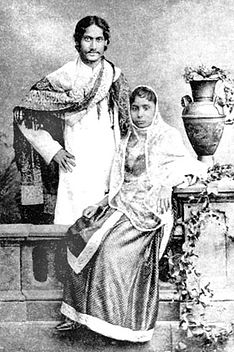

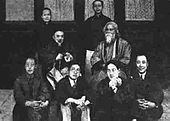

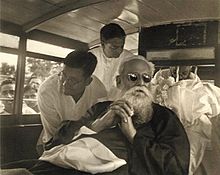
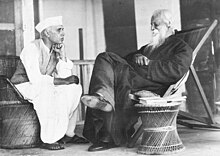
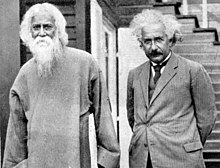


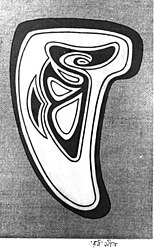
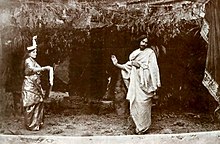
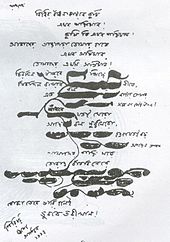

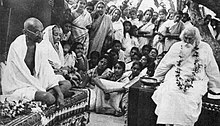
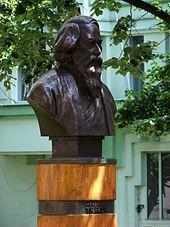
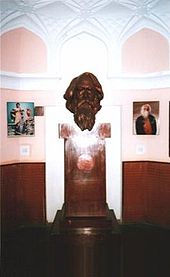

No comments:
Post a Comment